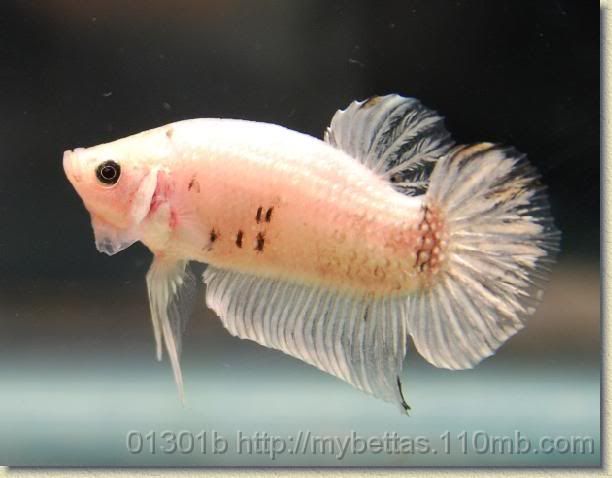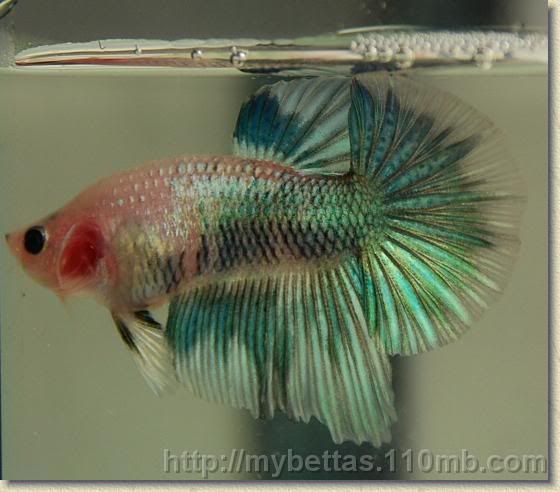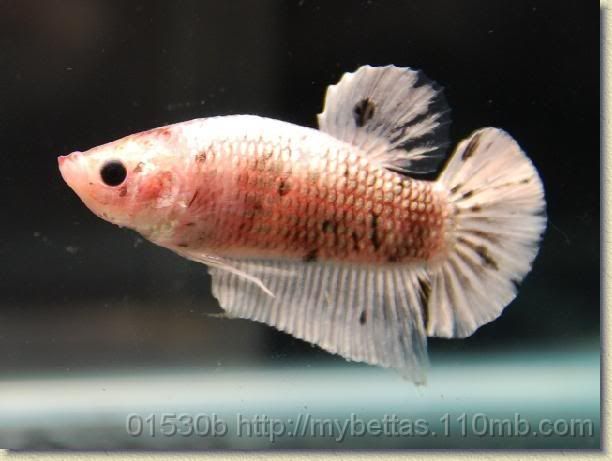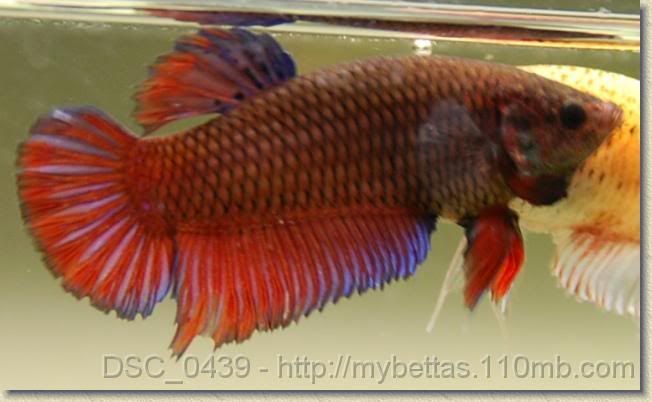Long story short, a large number of giants being sold as HMPK are in fact standard traditional plakad. What it really means is that if you manage to spawn them, you *will* get plakads until you work on it for at least 3 generations before you get a decent halfmoon form. This is irrespective of the price tag carried by such fish, after all the price tag is owner's way of parting from his fish ;)
As mentioned numerous times in this blog, giant developments are still in its infancy. Lots of people try to get giants by working their way through from square zero. Even some well-known breeders still ignorant in categorizing their line. Mixing standard giant plakad to halfmoon line would introduce the mutation to the halfmoon, hence in the eventuality we would expect some halfmoon giants from the outcome, however you may be disappointed to wait for 3 generations to see it :)
This topic is applicable as much to the HM giant line, however in the long fin giants such "misidentification" is easily spotted. When most of the spawn yields to SD or even VT, there is no way one can claim it to be HM ;) The categorization is somewhat blurred on HMPK since their tails are shorter and more difficult to distinguish.
Others even argued that they have OHMPK in their spawn when in fact it is no more than a standard plakad that spread over 180 degree. If it's not sharpe and straight rays, it's not "halfmoon", quite simple really...
Here is a sample that cannot be called as "halfmoon". Sure he has 180 degree spread, but his caudal edges are rounded, not straight ray.

Here is a sample of a straight rays halfmoon. Notice how each rays is as straight as it could be, from peduncle to the end of caudal, making the whole caudal forms a perfect D shape ?

Sometimes the fish doesn't spread to the max but it is clearly that he's a very nice halfmoon. For instance, this HMPK has very sharp straight rays and it is clearly visible eventhough he is not showing it.

The following male, for instance, is a non-stabilized halfmoon gene. His parentage comes from standard plakad being mixed to HMPK. Apart from the number of rays branchings (the more branchings the more likely it is coming from HM line), sometimes you can tell this from the mere fact that his rays are not smooth, quite raggerized and they look as if the fish had been crossed to crowntail (CT). Standard plakad derived fish will have the traditional plakad caudal, a very much rounded shape.

Now, there may be some halfmoon siblings in the spawn, but that's just simply reiterating the point that the line isn't stable yet, where it produces mixture of halfmoon and non-halfmoon genes (halfmoon-carrier). Continuing to work on the line till it produces a 100% halfmoon is desired, but that would requires hard work over a number of generations.
So there you go, shop wisely and be educated. A hefty price tag does not necessary mean you're getting good quality bettas and similarly, a seemingly cheaper price tag doesn't mean you're getting crappy quality, it could be that the seller is more realistic on his/her pricing ;)




No comments:
Post a Comment
Please do not put your email address on the comment to avoid being mined by spambot. Comment on posts older than a month will go through moderation (to avoid spam). Comments will not be filtered in any way - you would know, wouldn't you, cause you leave the comments to begin with :) Thanks for the comments!